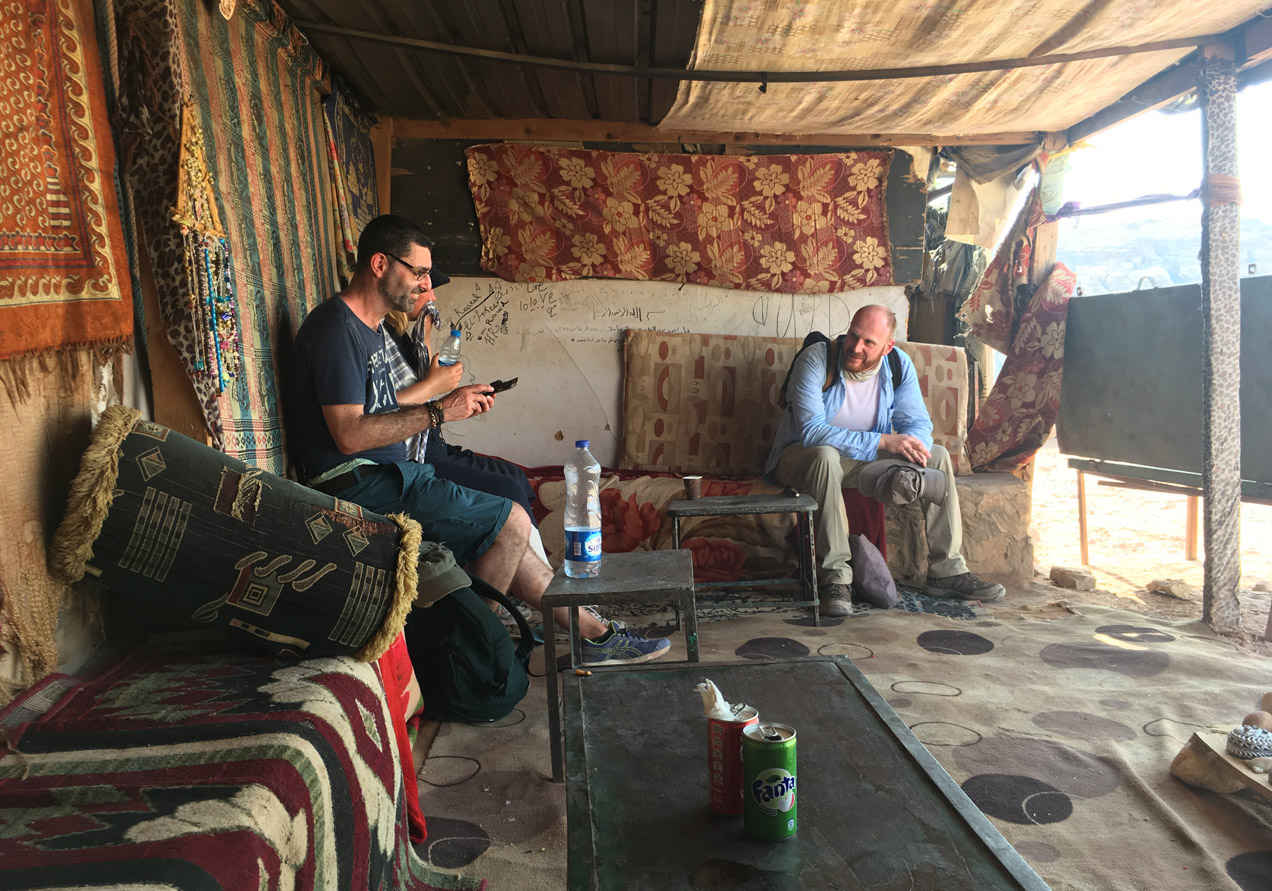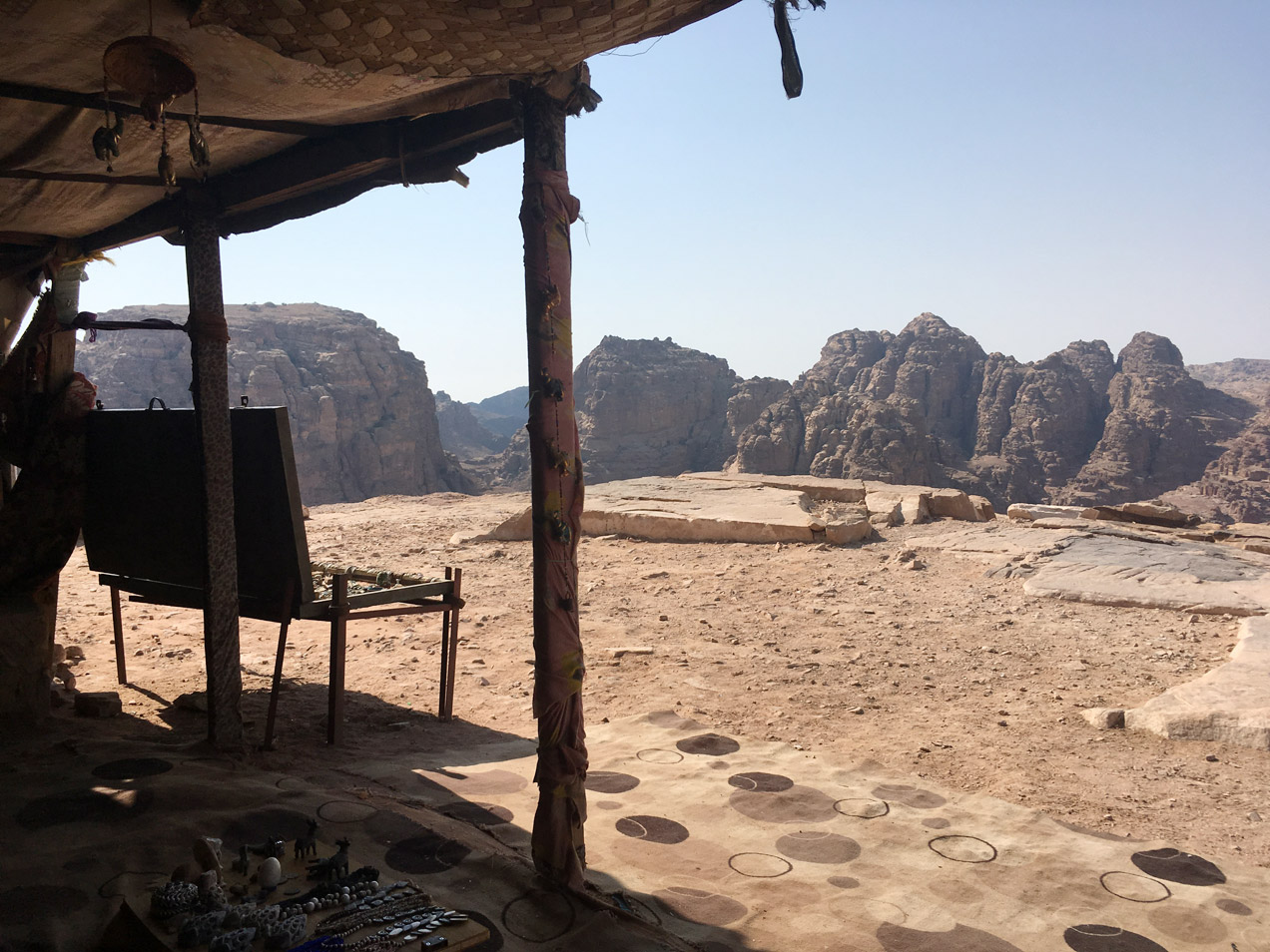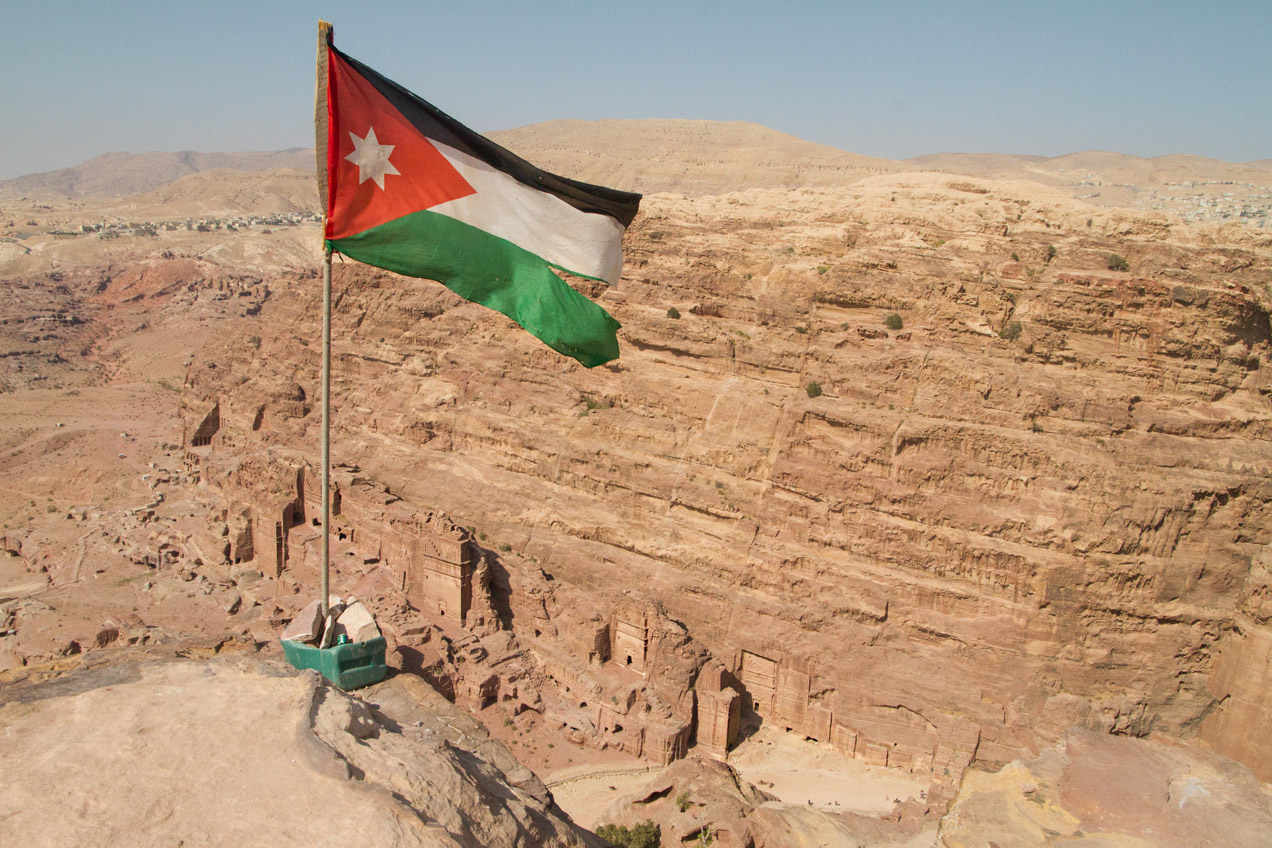Five Days In Jordan
AUGUST 2017
Like the Roman god Janus this trip both looked to the future as well as the past. The first part of the trip was teaming up with Medair and visiting different Syrian refugee families currently living in Jordan. These were people living in a state of limbo. Some wanted to return to Syria while others knew their towns had been destroyed and there was nothing to return to. Each family was trying to get by in their new reality.
The second portion of the trip was visiting Petra, the abandoned Arabian city in the south of Jordan. Through a canyon you emerge in a relic of the past. An entire city that, had you arrived several hundred years earlier, would have been bustling with trade. Now it is home to a few tour guides, some local souvenir merchants, and throngs of tourists.
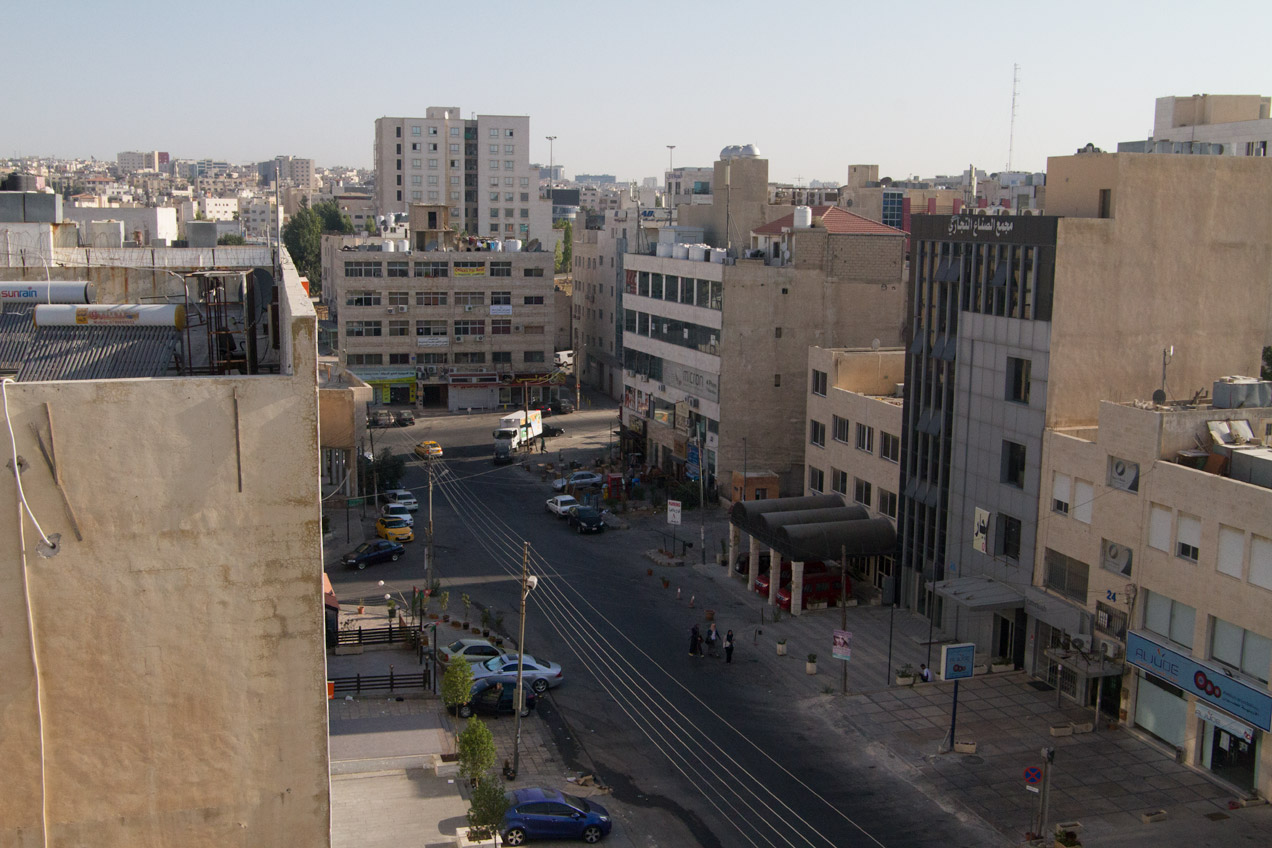
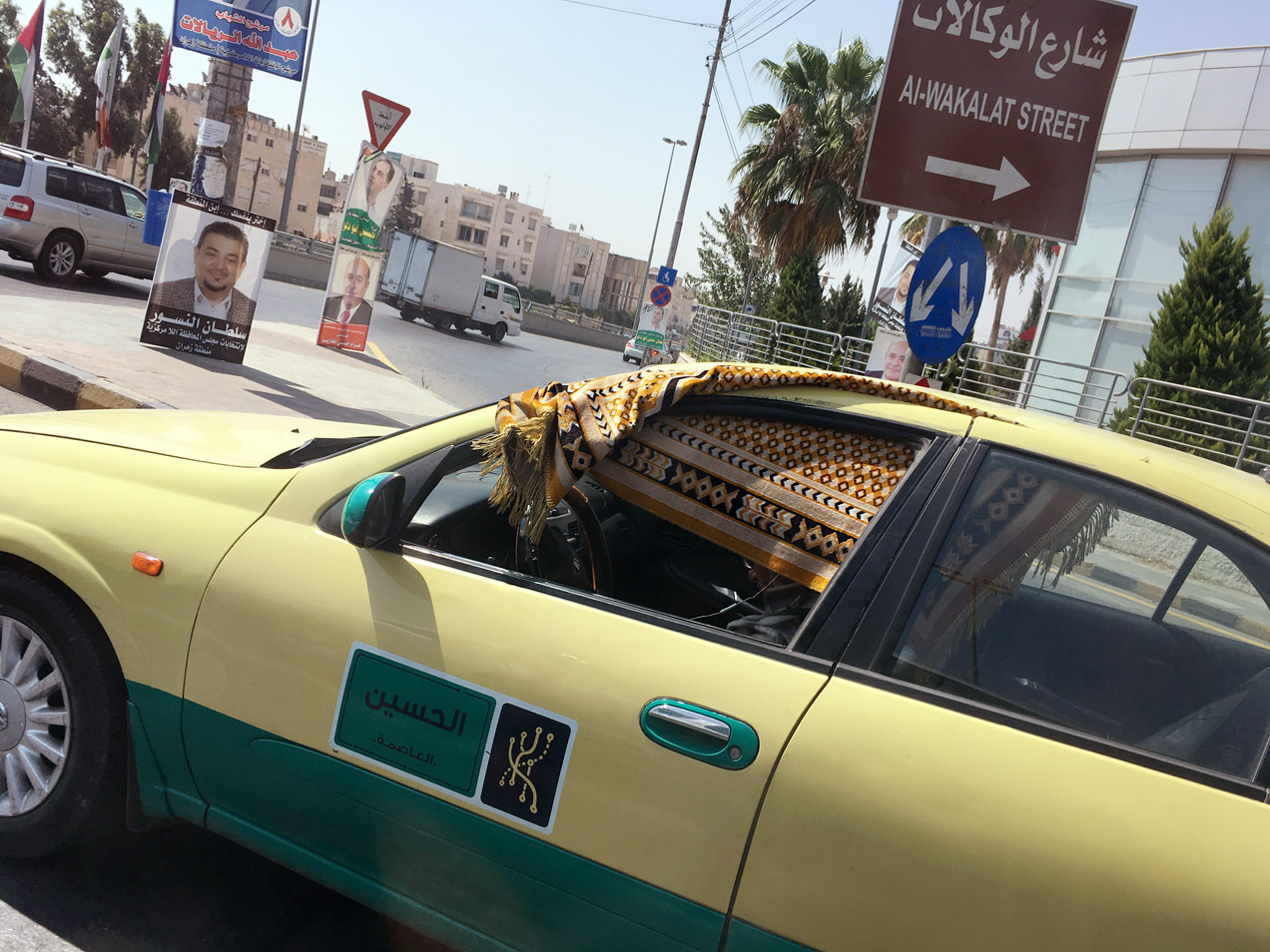
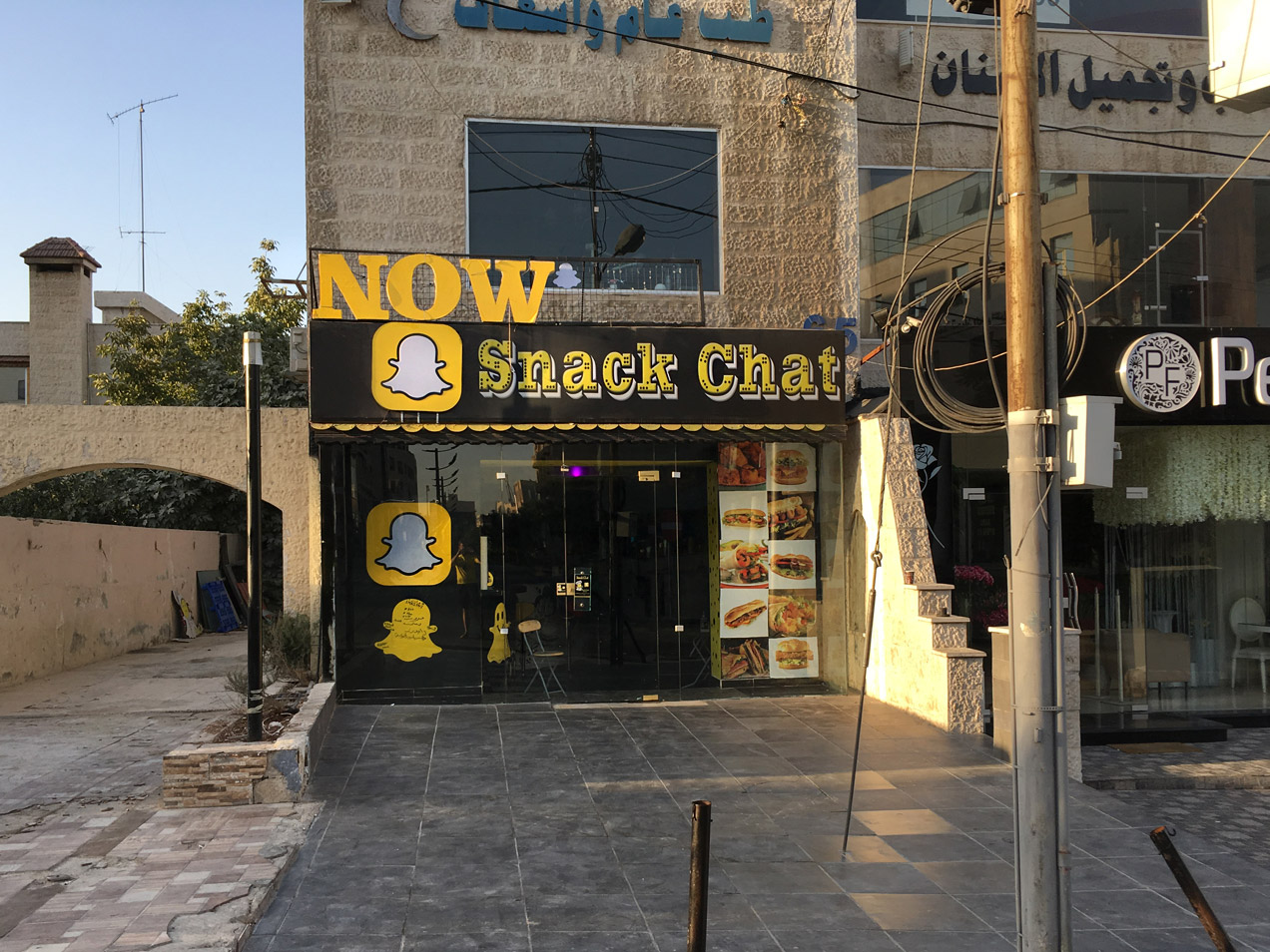

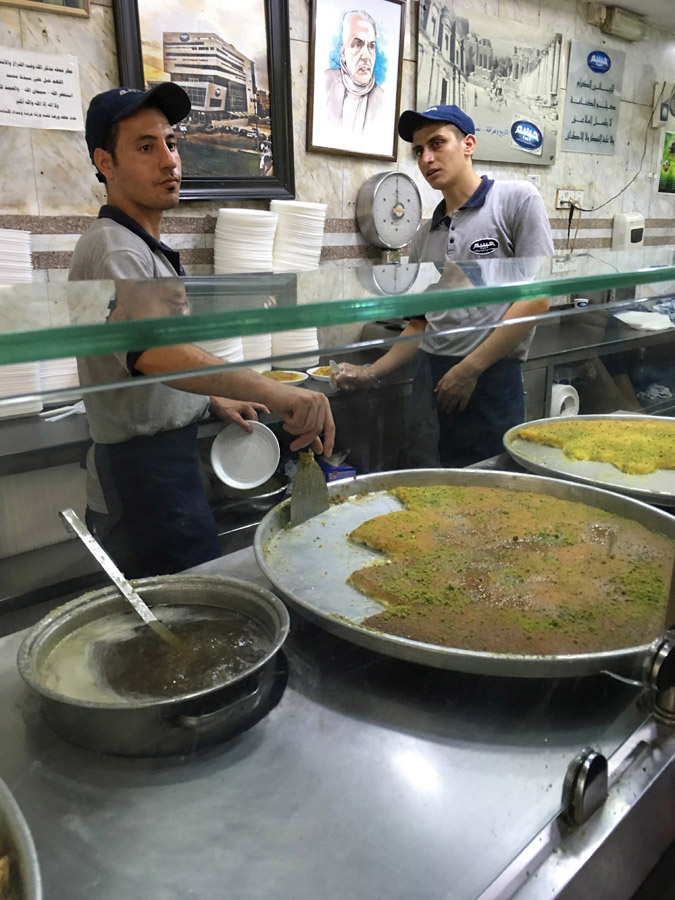
Kanafeh - spellings & recipes change, but this dessert is made with cheese pastry soaked in sweet, sugar-based syrup.
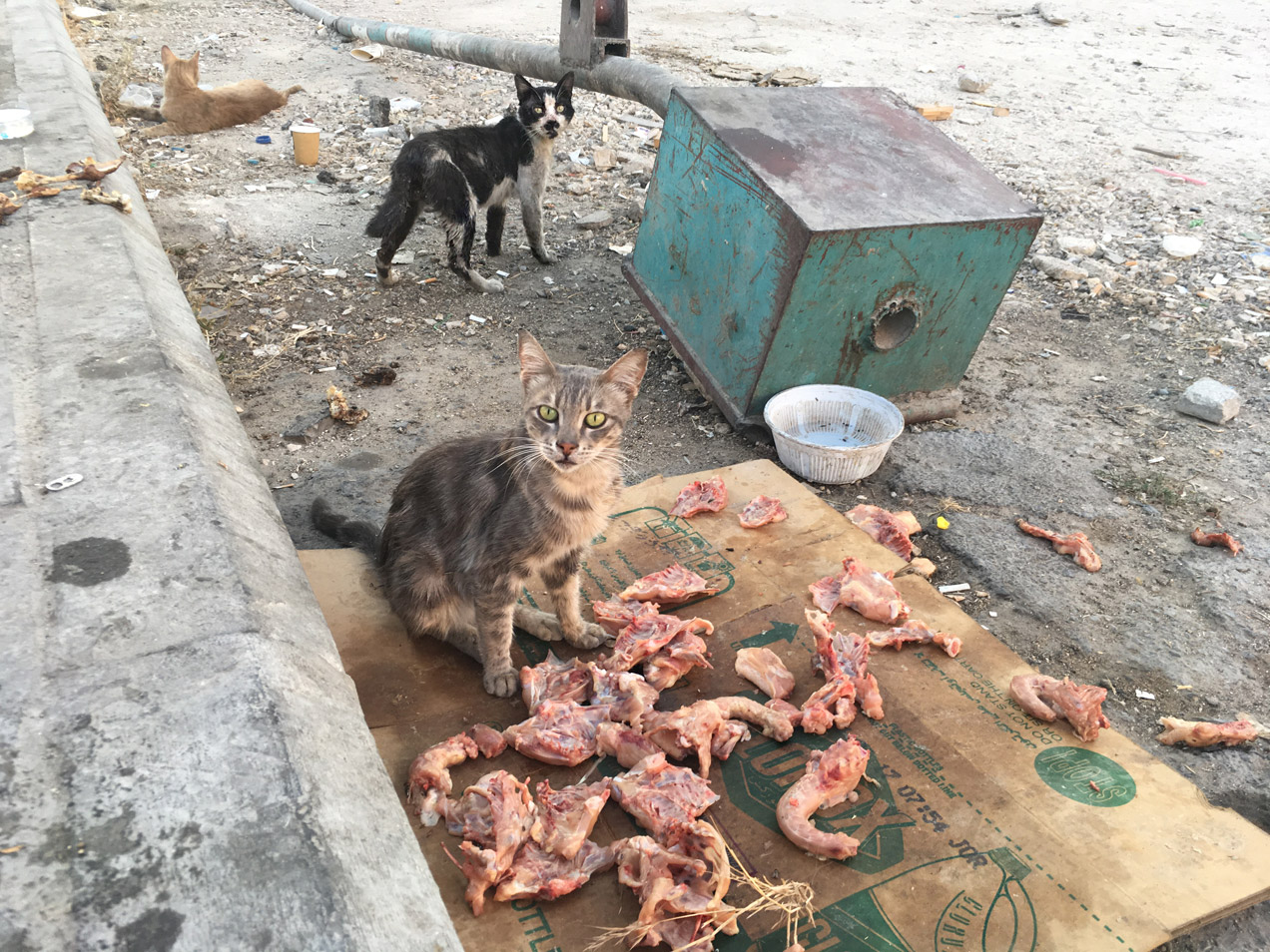
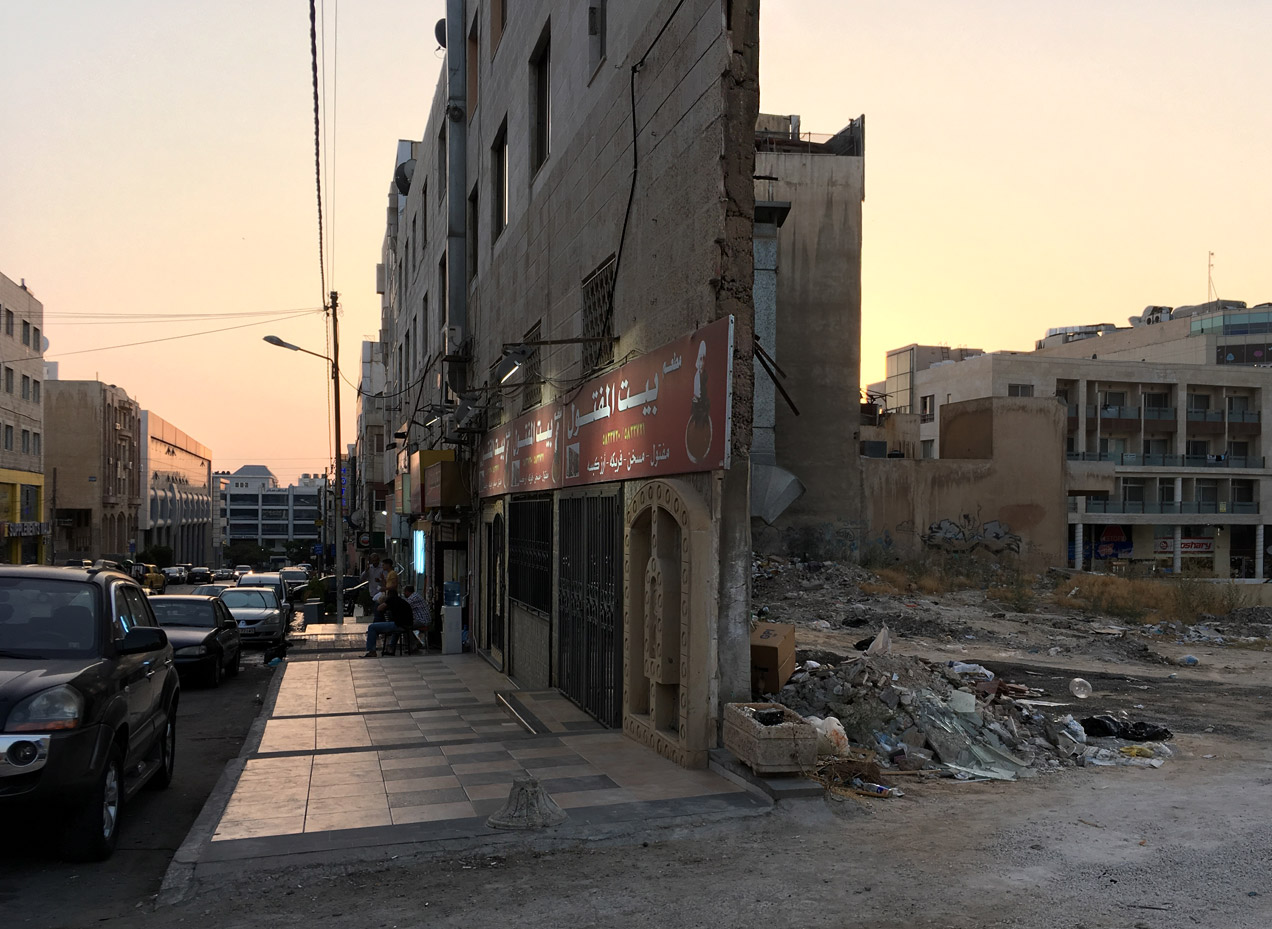
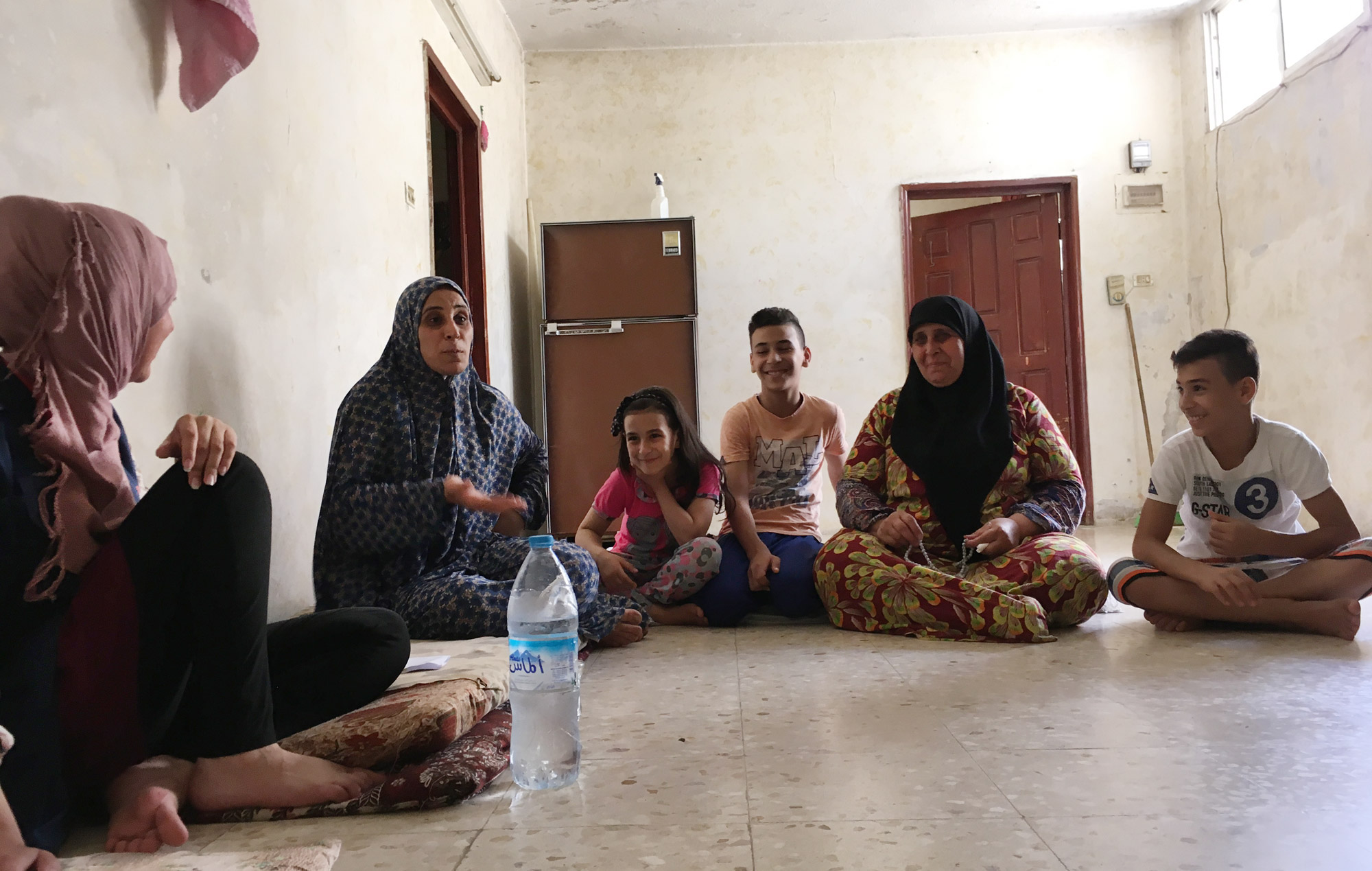
A Syrian family living in Jordan indefinitely.
Syrian Refugees
Since 2011 a collection of forces have been at war within Syria leaving ordinary civilians few options for survival. While roughly 4.8 million people have fled Syria as refugees to neighboring countries (and beyond) almost 6.3 million more have fled their homes but are living as internally displaced persons (IDPs) somewhere within Syria.
The families we met with all live in poverty. Back home in Syria many of these people were not rich to begin with but having to flee their homes left them with even less. Through a series of geopolitical restrictions many of these people were forbidden (by the Jordanian government) from working. This policy is in place to keep jobs available to Jordanian citizens but has left many Syrians with few ways to make money. These are jobs that pay under the table but these leave workers exposed to exploitation as well as low pay.
Ultimately there were and are no easy solutions to the problems facing these families. Charitable organizations, such as Medair, provide coordinated assistance to help these families and others but more help is needed. While the widespread destruction of the Syrian civil war, and the mass migrations of refugees, get the most media attention it is the smaller daily humanitarian stories being played out by millions of Syrians that will have the longest most devestating effects.
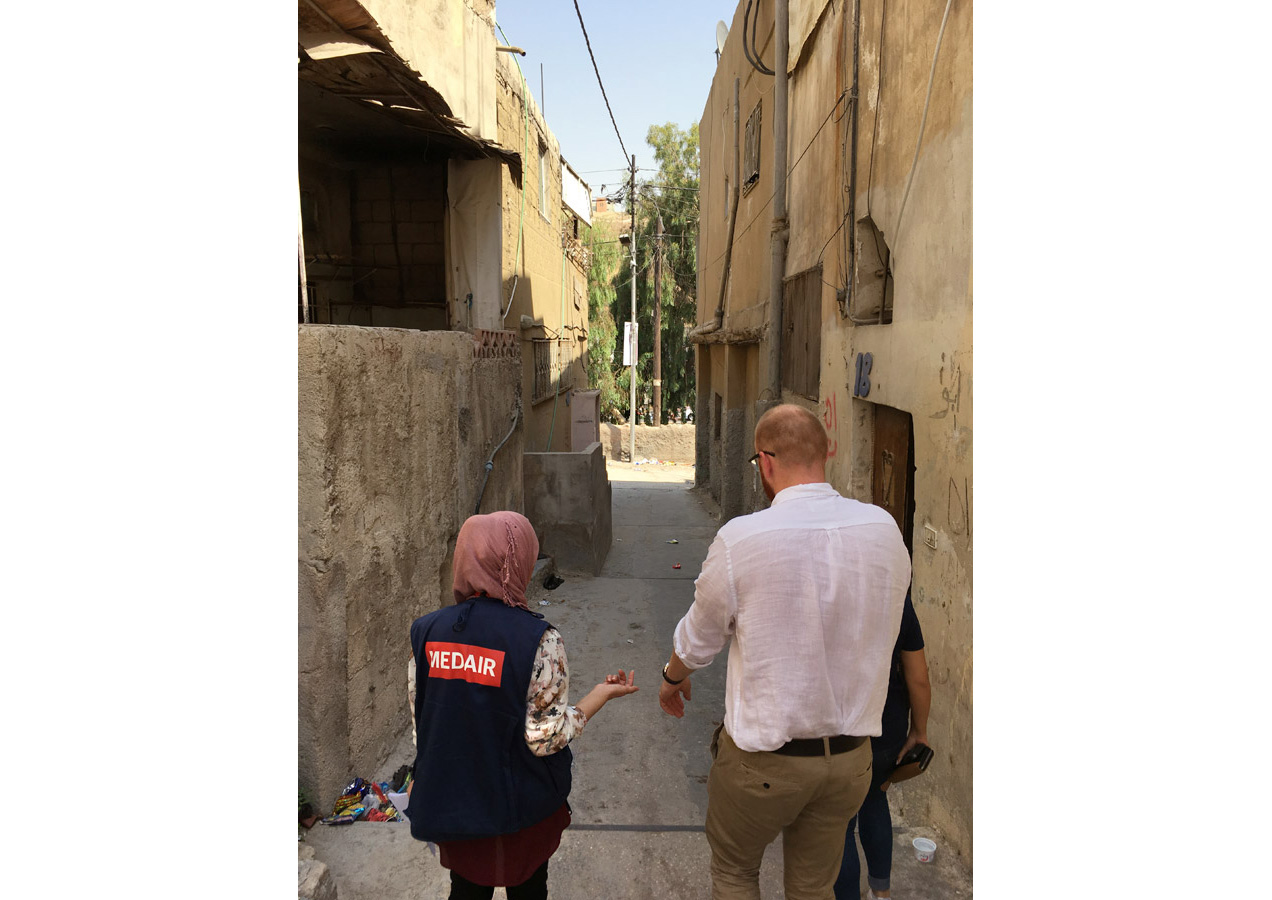

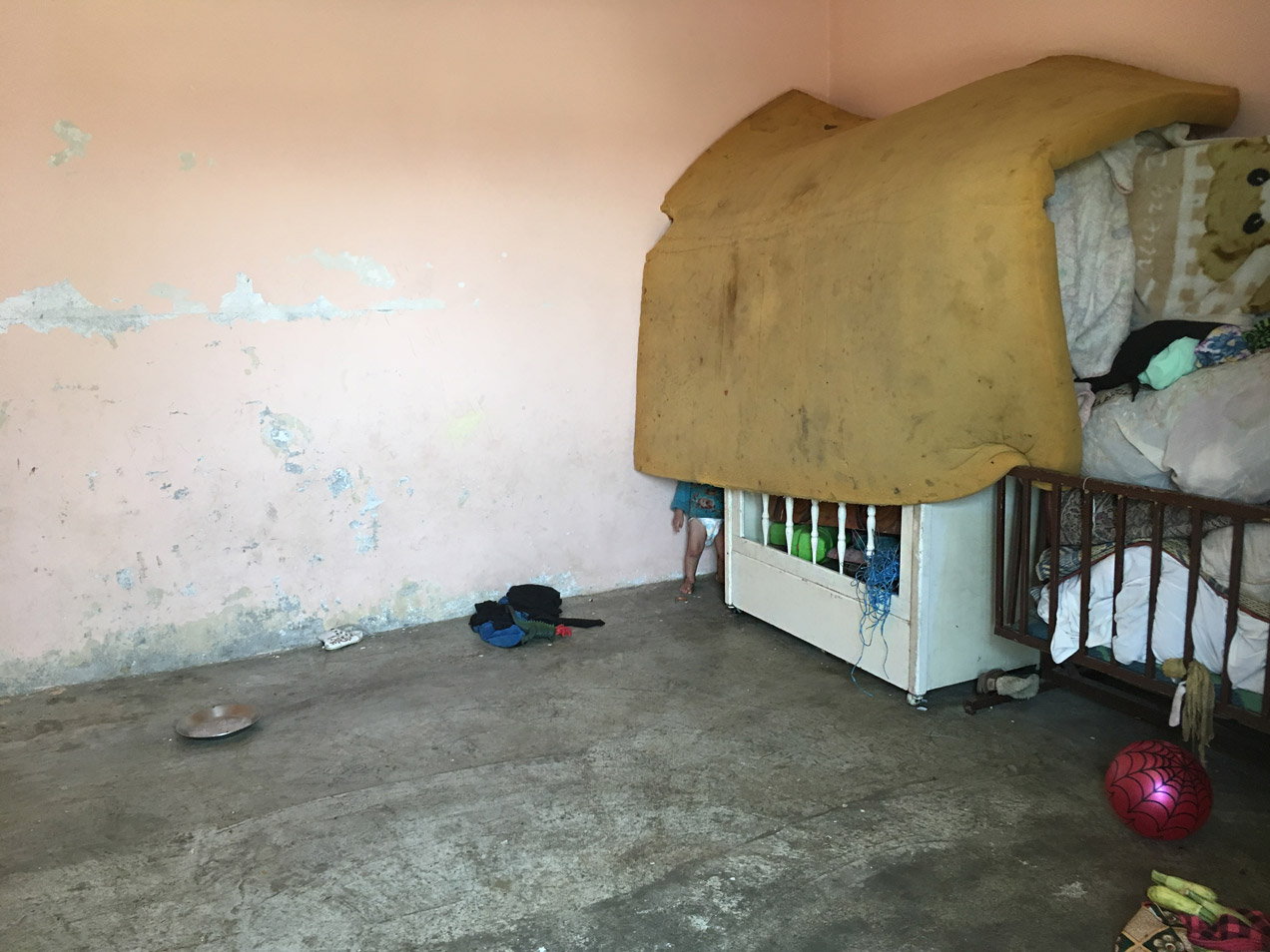
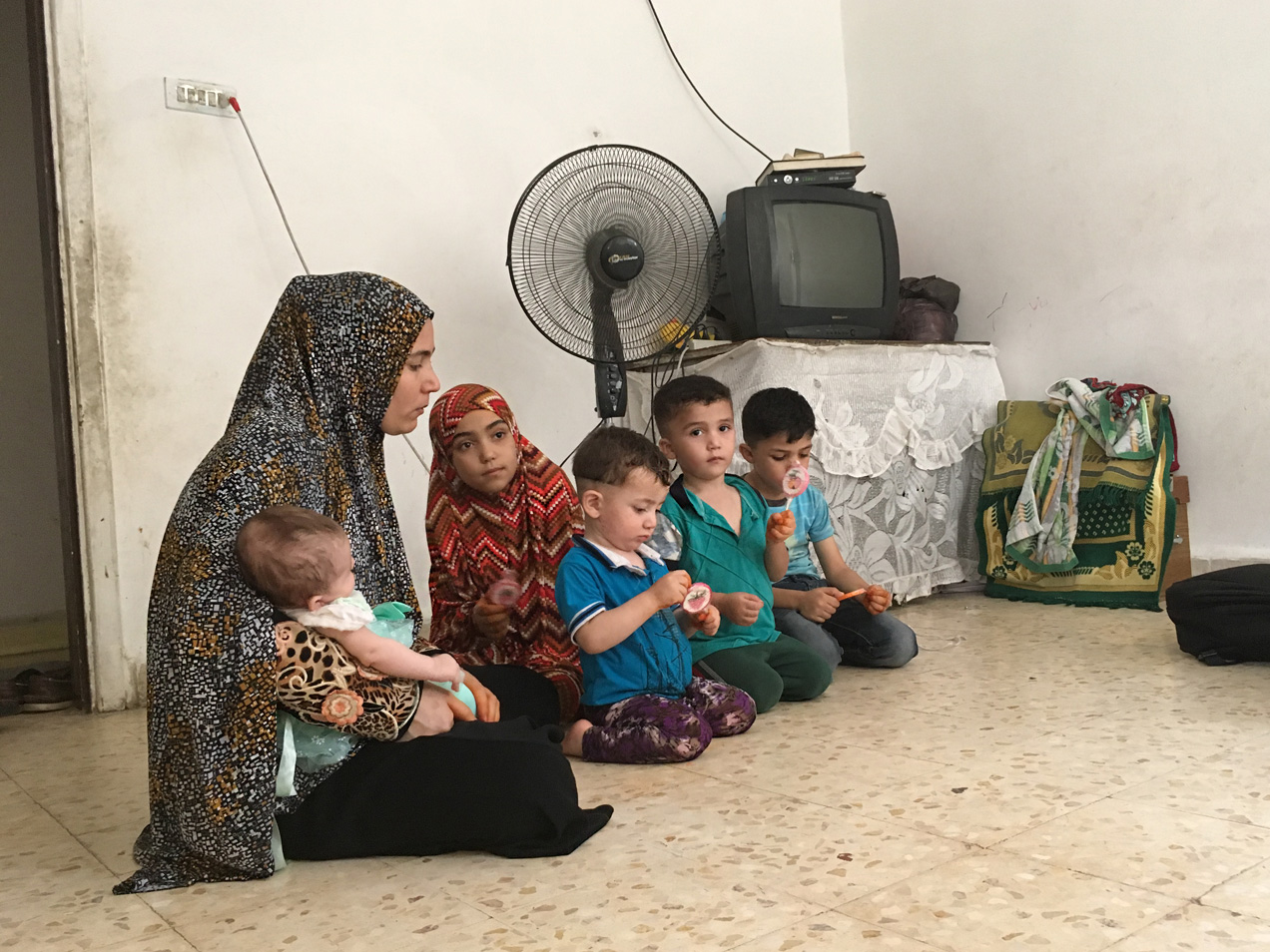
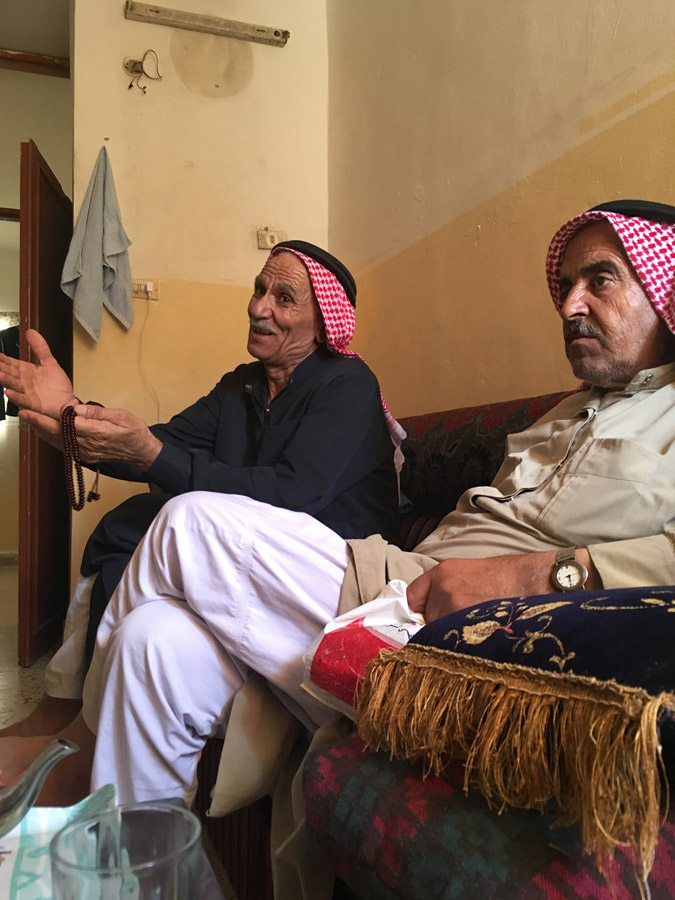
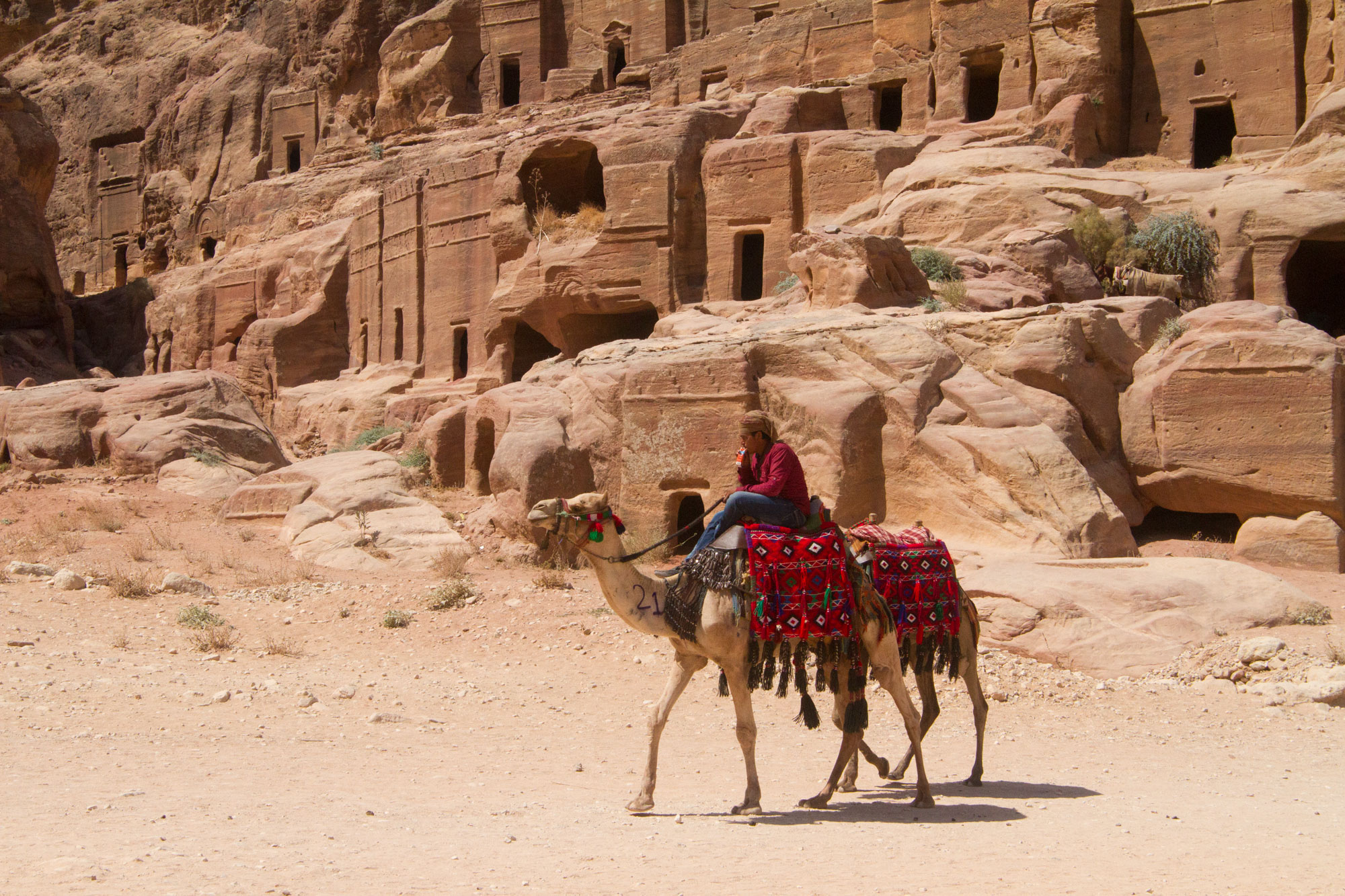
Petra and the Nabataeans
The second half of the trip looked to the distant past and the ancient city of Petra. Built by the Nabataeans, Petra was a major city for the trade routes through the Middle East. This generated enormous wealth for the Nabataens which of course led to invaders looking to plunder the city. This was easier said than done given the harsh environment Petra was situated in. Few invaders were accustomed to the desert and rocky terrain. As many as 20,000 people may have enjoyed the prosperity of Petra from 4 BCE until the eventual conquest by the Romans in 106 CE. With time the trade routes shifted and Petra, no longer the hub of activity, slowly died out.
Most of the structures of Petra are carved out of the rock face and are crypts for the dead. The most famous structure of Petra is Al-Khazneh, or “the treasury”, which is featured prominantly in Indiana Jones and the Last Crusade and is also a crypt. As for structures for the living it is believed that homes could have been tents or perhaps simple structures built with more traditional methods but fell apart over the years leaving almost none remaining. The result is that today Petra is almost entirely a necropolis with a few Roman structures still standing as well.

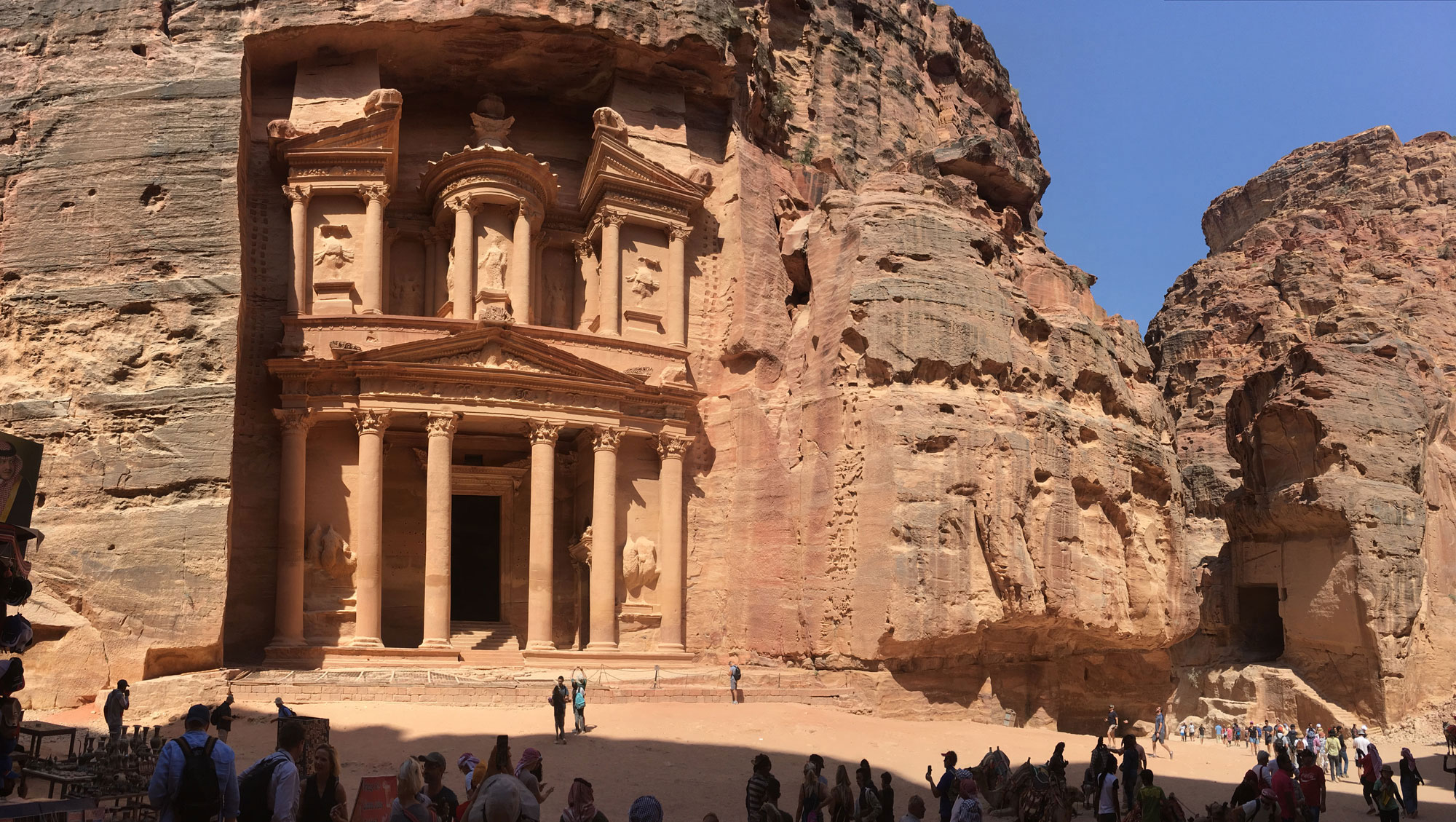
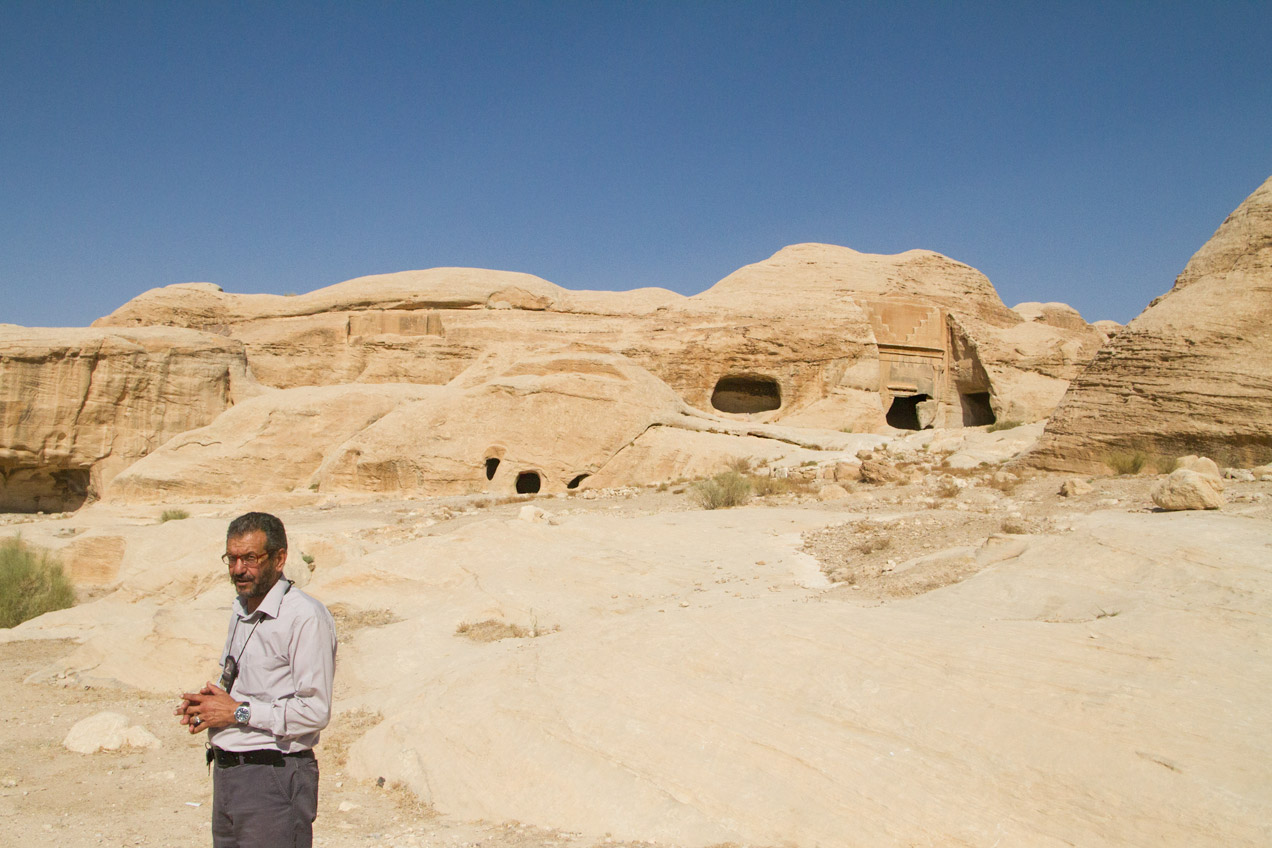

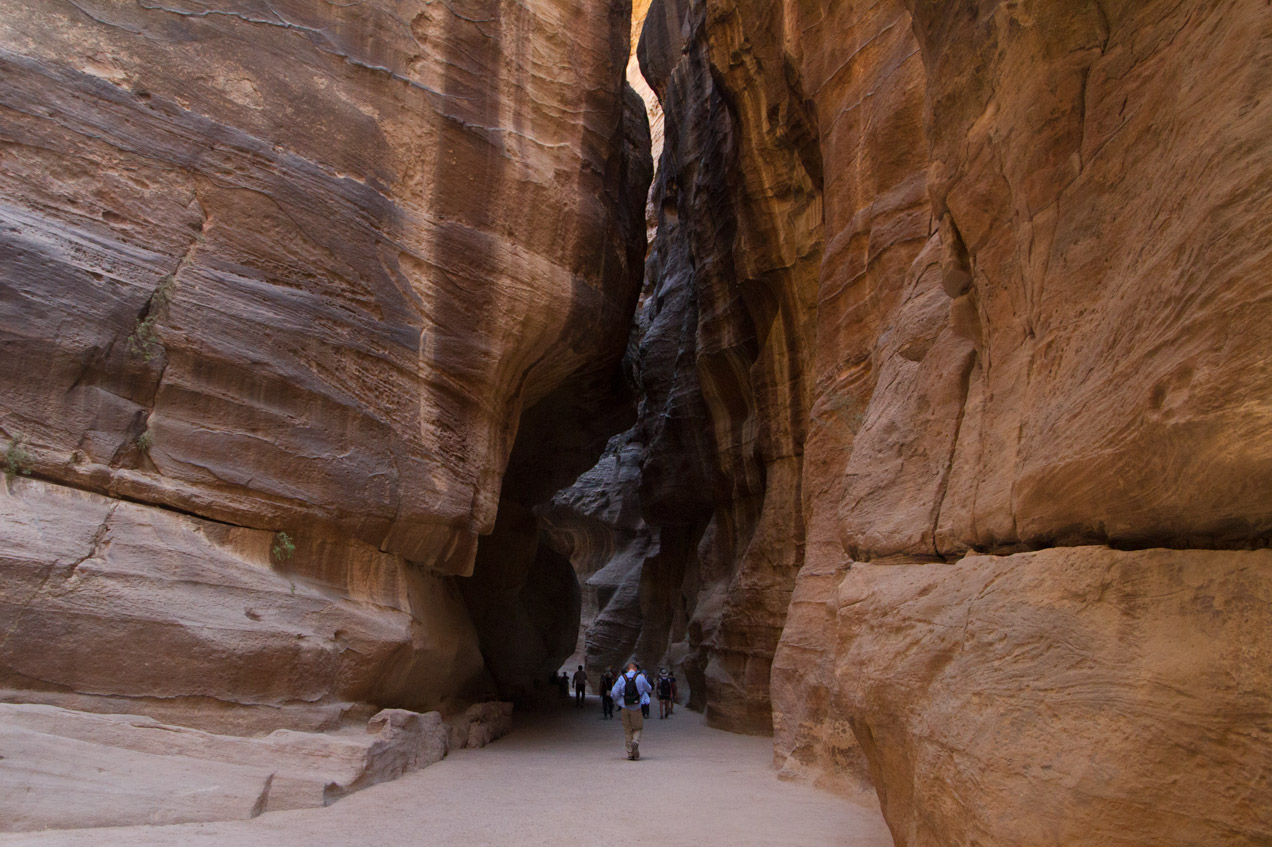
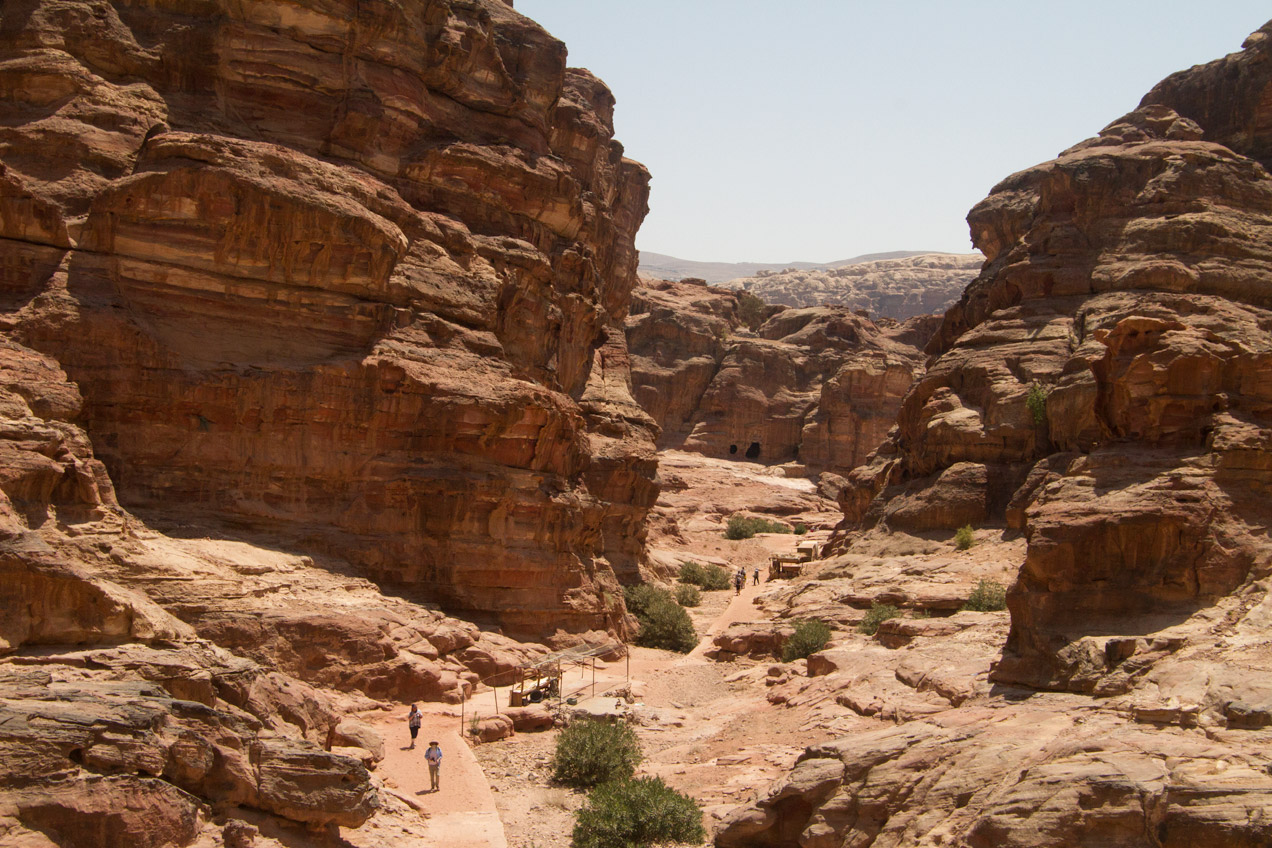
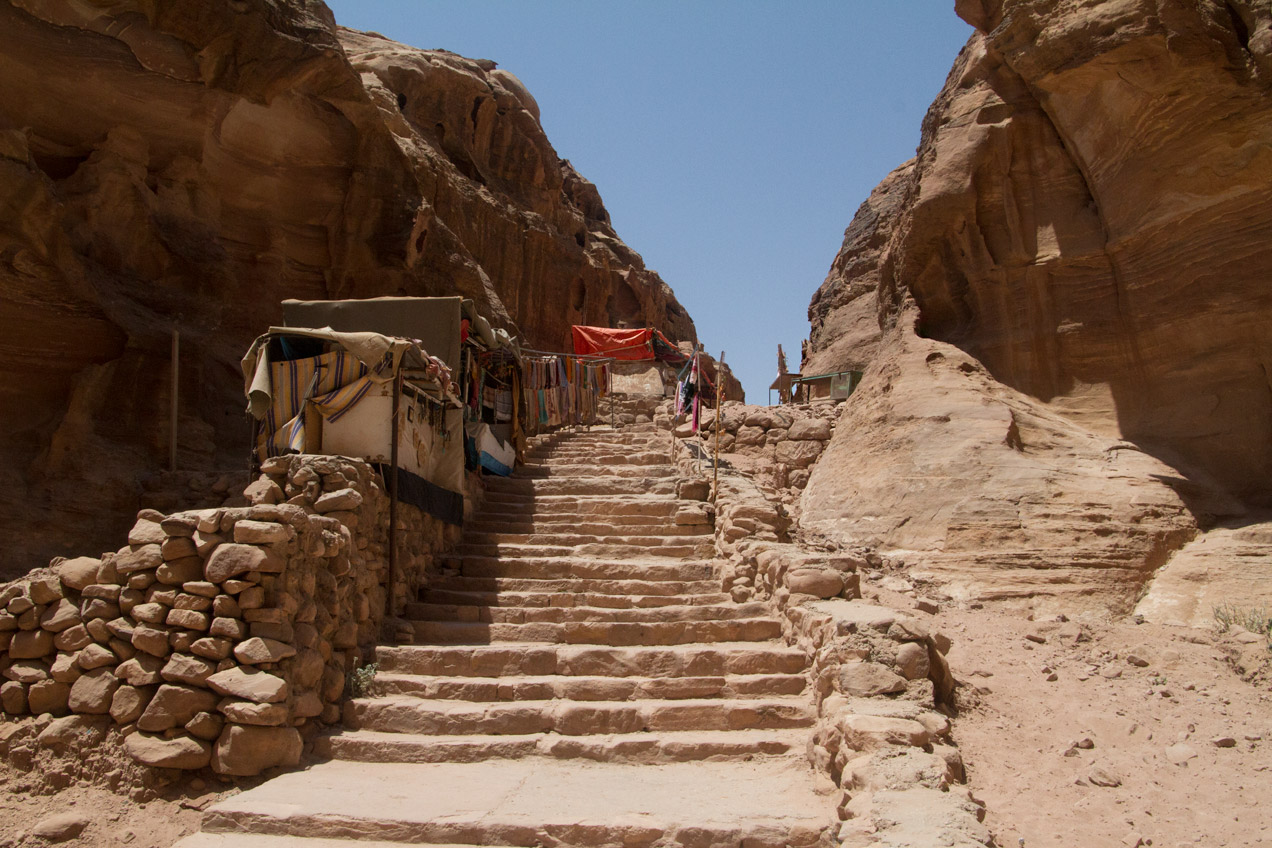

Visiting Petra
Petra today is an interesting place where the past meets the present. You walk the same paths that people walked thousands of years ago, and local merchants are still there trying to sell their wares, but today's reality is that what's for sale are souvenir baubles being sold to tourists carrying selfie-sticks.
The vendors of Petra are spread out but they are primarily on the main paths and if you keep moving they are easy to avoid. What is harder to avoid are the exotic animal rides. Locals try to sell you a ride on a camel or a donkey to shorten your walk and/or for photo opportunities, but even just the quickets study of these animals points towards abuse. The animals of Petra are poorly treated, some being chained in place to stand in the sun all day. I wasn't keen on riding an animal in the desert sun to begin with but I felt especially bad at the prospect of contributing to the cycle of abuse.
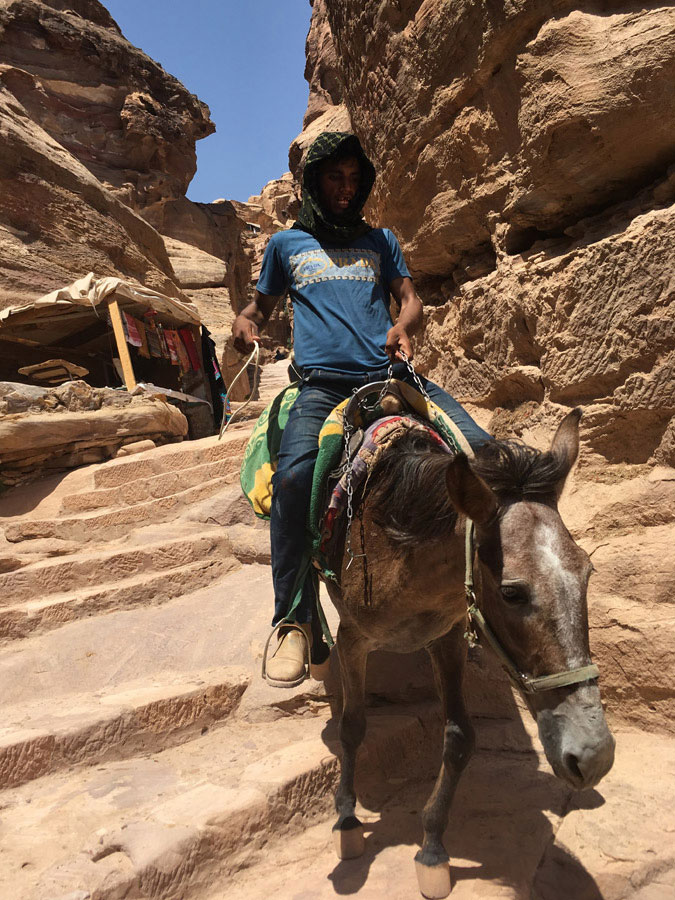
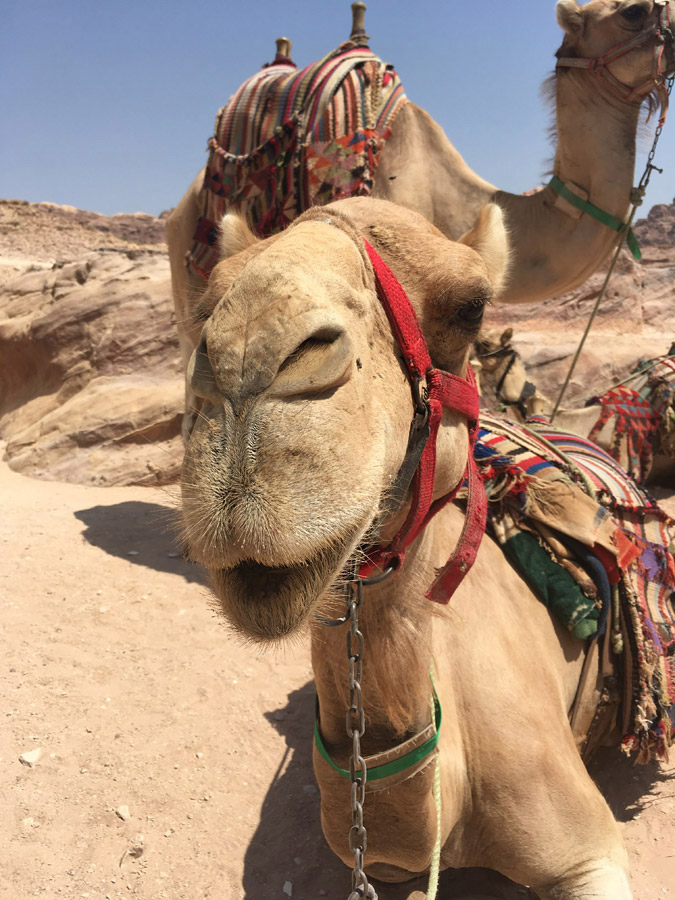



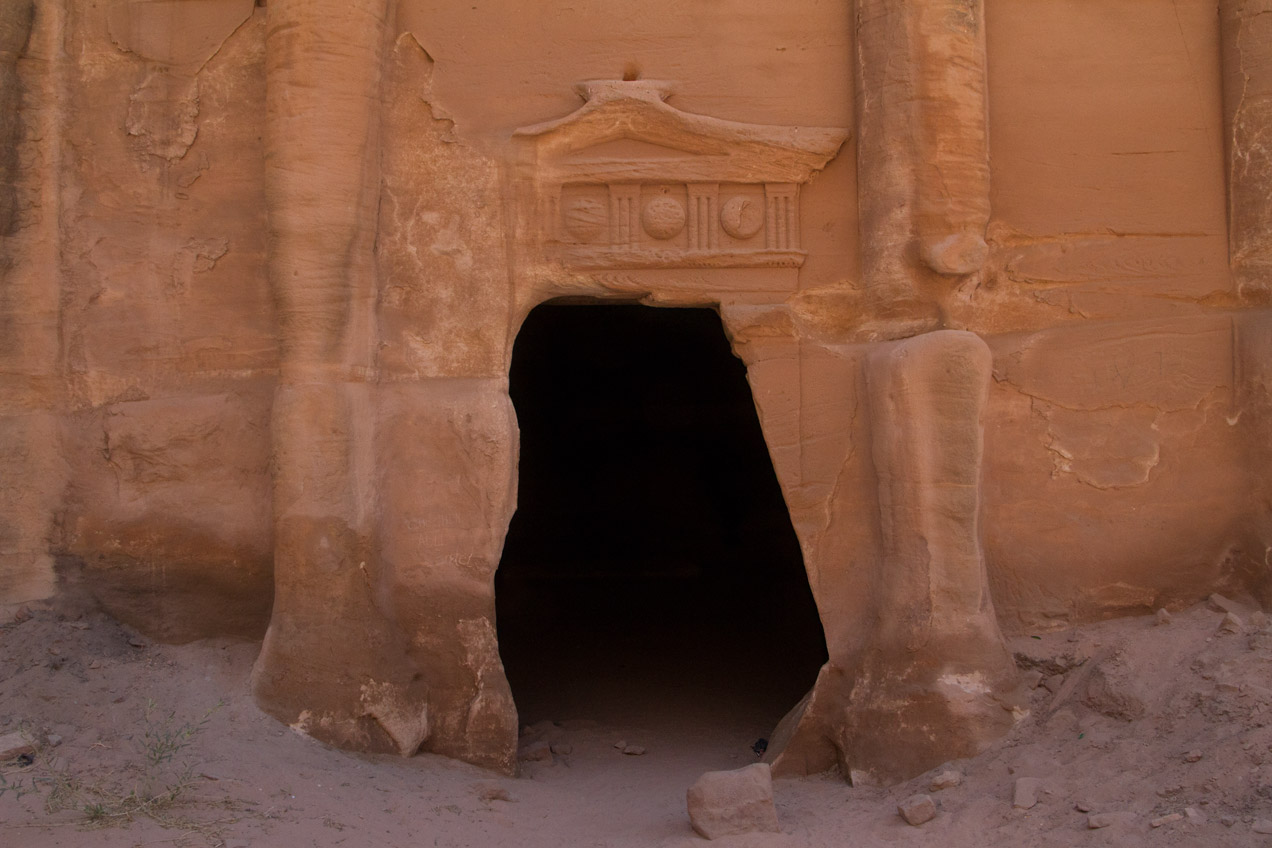
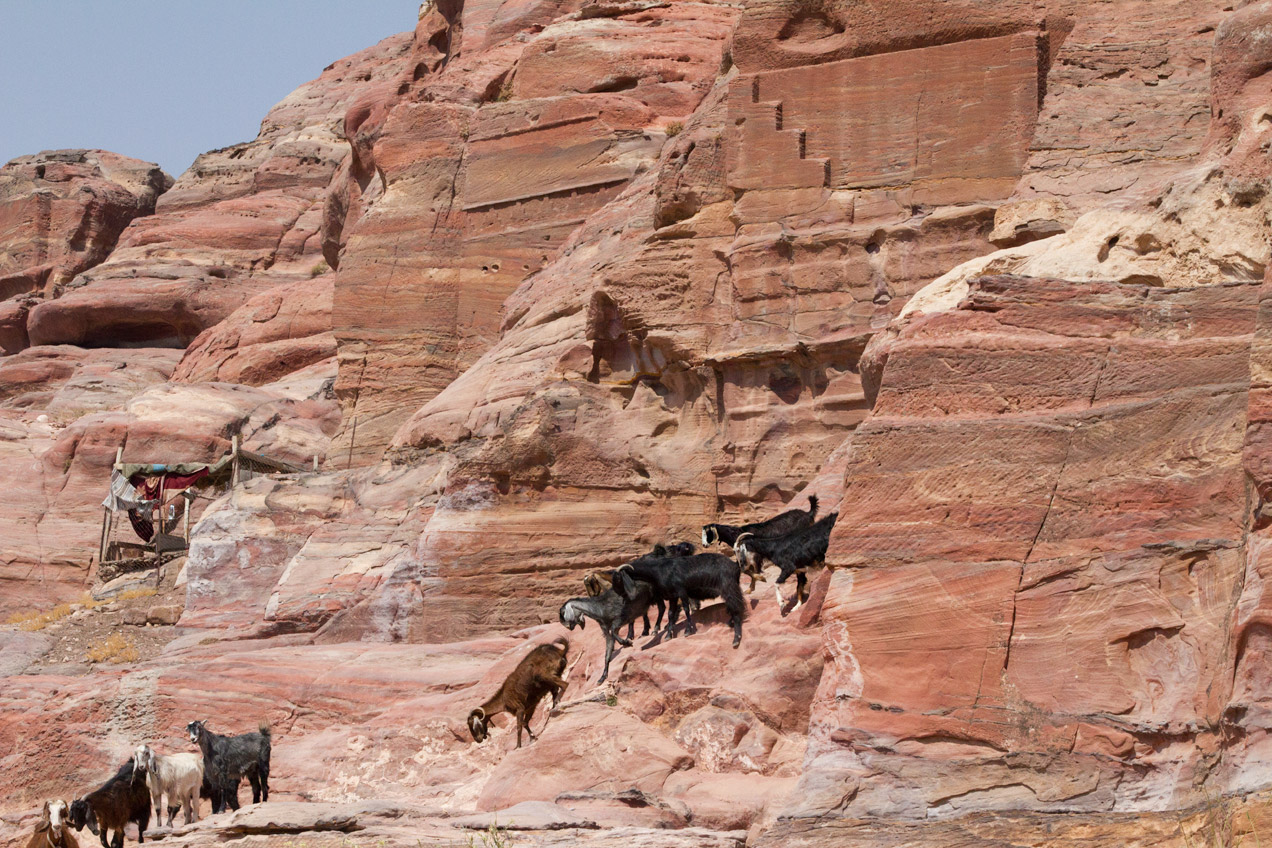


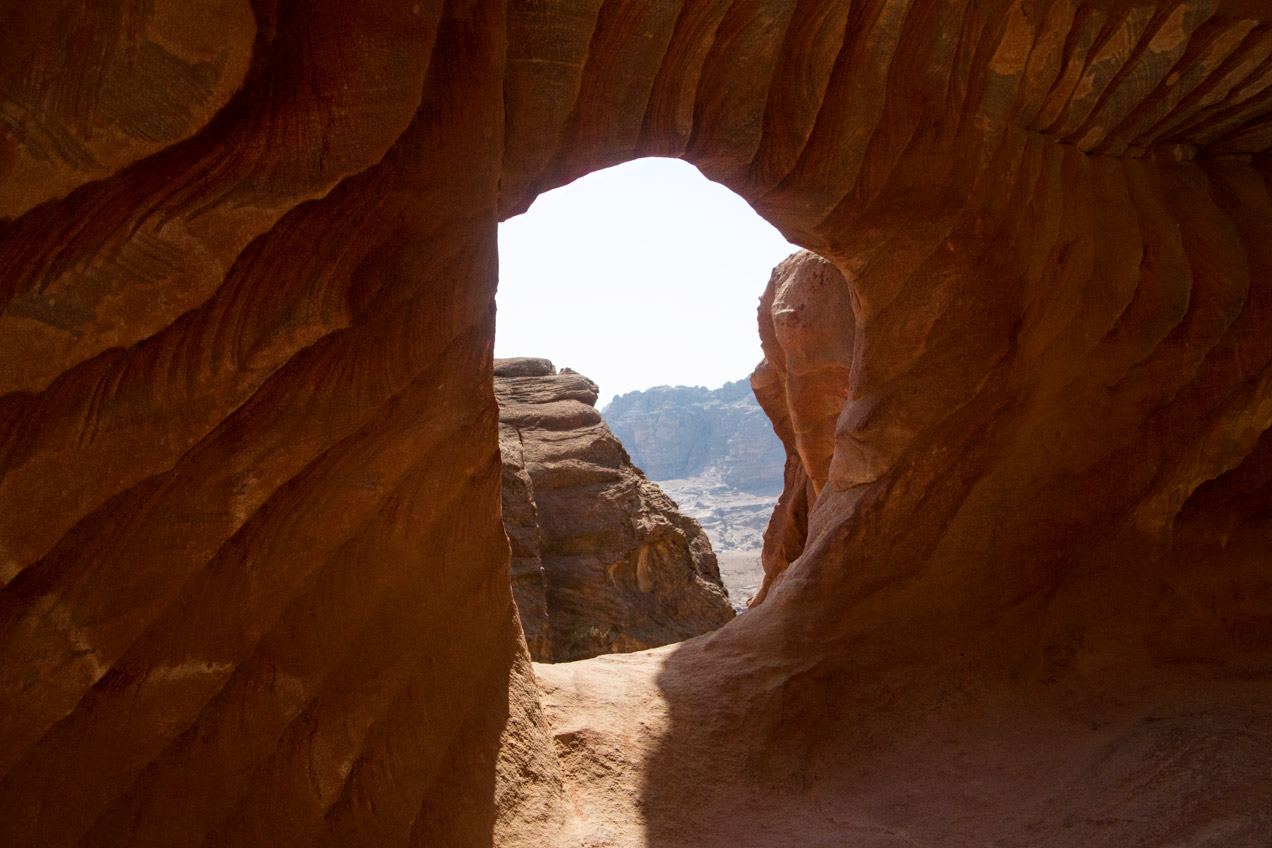
Chasing Shade
Being of Eastern-Western European descent I only come in two colors: white or red. Visiting Petra in August is a hot time and finding shade is critical - as is carrying water. We hiked a few trails over several hours and it was tiring work, but very rewarding. I worked on finding shade at every turn. I think by mid-afternoon the temperature was somewhere in the high 90s. If you go to Petra take good walking shoes, sunscreen, and lots of water.
